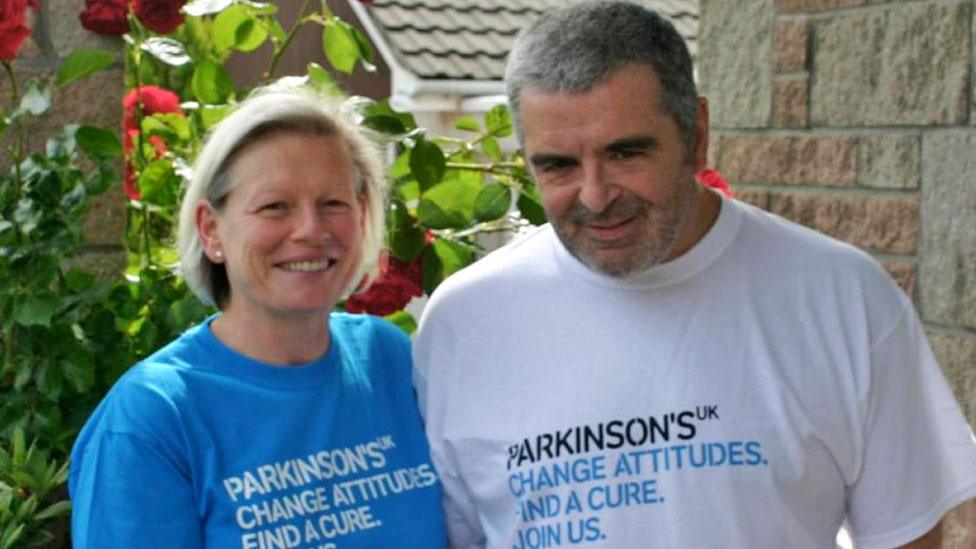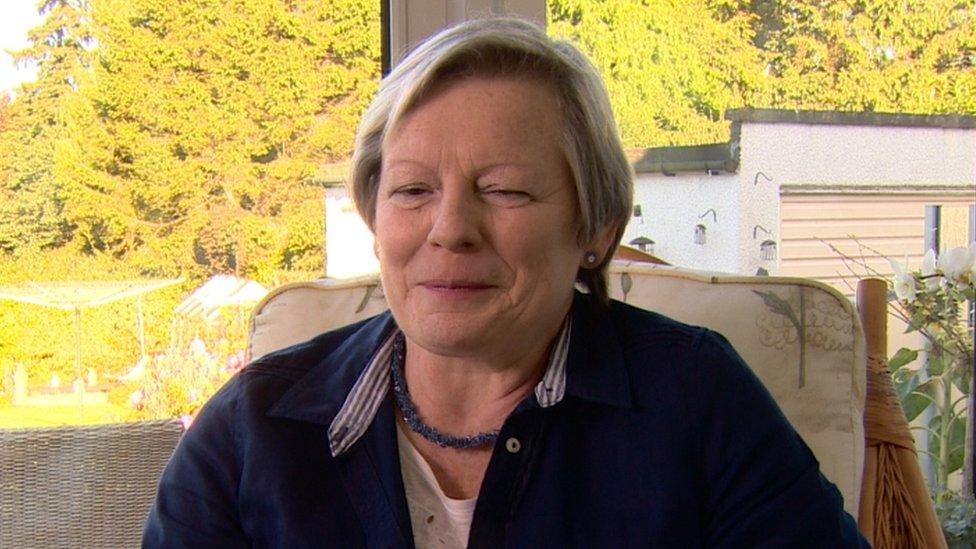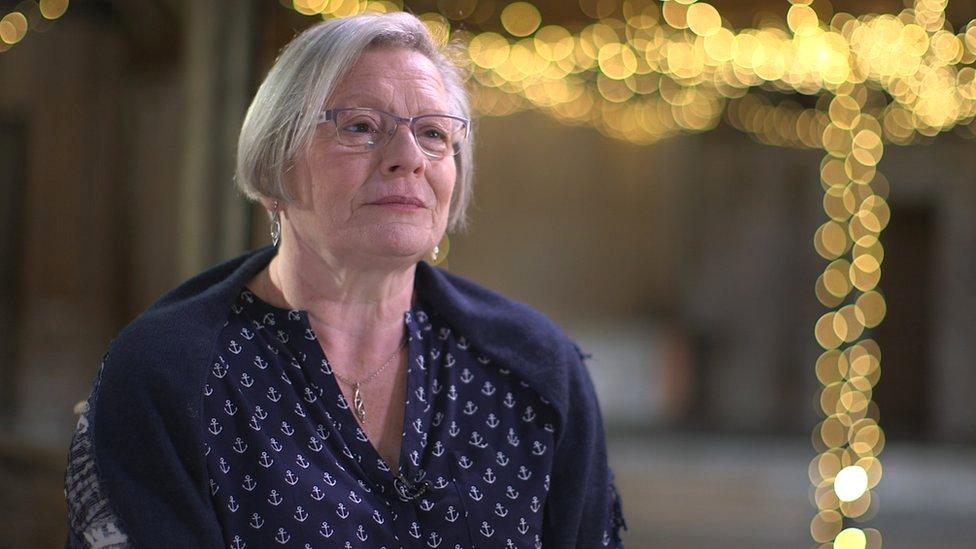Parkinson’s test: Woman who smelled disease on husband helps scientists
- Published
Woman who can smell Parkinson's helps researchers create swab test
A Scottish woman who found she could detect Parkinson's through smell has inspired scientists to develop a swab test that could be used to diagnose it.
Researchers in Manchester have created a new method which they say can detect the disease in three minutes.
Further study will be required to validate the findings before they can develop a diagnostic test that could be used in clinics or by GPs.
Their work was inspired by Joy Milne, a retired nurse from Perth.
Joy, 72, knew her husband Les had Parkinson's more than 12 years before he was diagnosed when she identified a change in the way he smelled.
"He had this musty rather unpleasant smell especially round his shoulders and the back of his neck and his skin had definitely changed," she said.

Joy first detected the odour on her husband Les, who was diagnosed with Parkinson's at the age of 45
She only linked the odour to the disease after Les was diagnosed and they met people at a Parkinson's UK support group who had the same distinctive smell. Les died in June 2015.
Now a team in the University of Manchester, working with Joy, has developed a simple skin-swab test which they claim is 95% accurate under laboratory conditions when it comes to telling whether people have Parkinson's.
The researchers analysed sebum - the oily substance on skin - which was collected by using a cotton swab on patients' backs, an area where it is less often washed away.
Using mass spectrometry, they compared 79 people with Parkinson's with a healthy control group of 71 people.
The research found more than 4,000 unique compounds in the samples, of which 500 were different between people with Parkinson's and the control group.
The study is published in the Journal of the American Chemical Society Au., external
Prof Perdita Barran, who led the research, said there was not currently a chemical test for Parkinson's disease and many thousands of people were on waiting lists for a neurological consultation.
She said developing a confirmatory test that could be used by a GP would be "transformative".
"At the moment we have developed it in a research lab and we are now working with colleagues in hospital analytical labs to transfer our test to them so that it can work within an NHS environment," she said.
"We are hoping within two years to be able to start to test people in the Manchester area."

Prof Perdita Barran said she was tremendously excited by the results
Parkinson's is the fastest growing neurological condition in the world. Around 145,000 people in the UK live with the condition, says Parkinson's UK - including more than 12,000 in Scotland.
There is no cure and no definitive diagnostic test, with clinicians diagnosing patients by observing symptoms.
The condition can cause a wide variety of symptoms including difficulty walking, speaking and a tremor.
The scientists now need to validate their findings in a clinical lab before it can be used for patients.
James Jopling, the Scotland director of Parkinson's UK, said the discovery could make a real difference to people living with the disease.
"Currently with no definitive test people have to wait months or years to be diagnosed so the fact that you could get the treatment and support you need and that researchers could begin new treatments is incredibly important," he said.
Joy knows what an earlier diagnosis would have meant for her and her family.
"We would have spent more time with family," she said.
"We would have travelled more. If we had known earlier it might have explained the mood swings and depression."
The night before her husband died, he made her promise to investigate her sense of smell.
According to Joy, he said: "You must do this because it will make a difference."
She hopes her accidental discovery will do exactly that.
- Published22 October 2015

- Published18 December 2017

- Published20 March 2019

- Published11 March 2021
